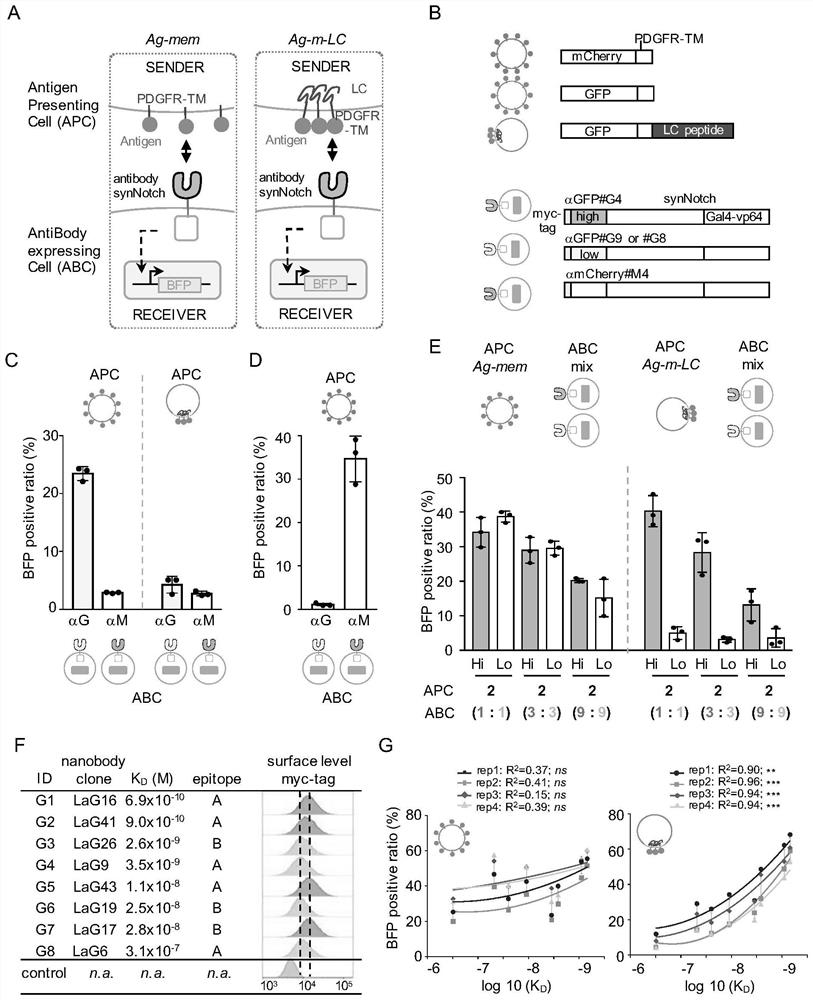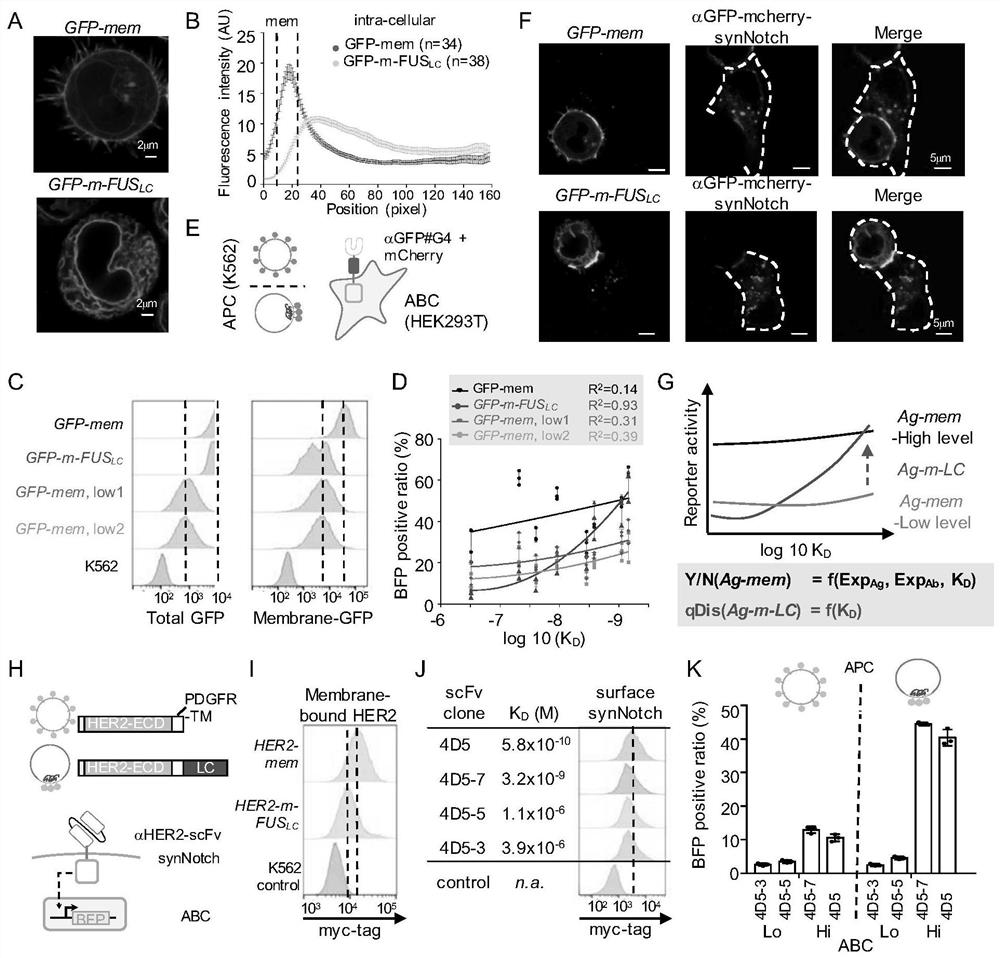Cell surface macromolecule quantitative display system as well as preparation method and application thereof
A display system and cell surface technology, which is applied in the field of cell surface macromolecule quantitative display system and its preparation, can solve the problems of not being able to distinguish the difference of antibody-antigen affinity well
- Summary
- Abstract
- Description
- Claims
- Application Information
AI Technical Summary
Problems solved by technology
Method used
Image
Examples
preparation example Construction
[0066] The present invention also provides a preparation method of a cell surface macromolecule quantitative display system, the preparation method comprising the following steps:
[0067] 1) Cloning the receptor of interest onto the cell membrane of the receptor-expressing cell;
[0068] 2) cloning the ligand of interest onto the ligand quantitatively presenting cell;
[0069] The methods of cloning the target receptor into receptor expressing cells and cloning the target ligand into the ligand quantitatively presenting cells are molecular biology methods well known to those skilled in the art.
[0070] The receptor expressing cells carry a fluorescent reporter group.
[0071] The ligands and receptors mentioned in the present invention can be antigens and antibodies.
[0072] The present invention also provides the use of the cell surface macromolecule quantitative display system in ligand-receptor affinity detection and / or batch acquisition of high-affinity antibodies.
...
Embodiment 1
[0101] Example 1 quantitatively demonstrates the construction and activation of the desired stable transfection cell line
[0102] Construction: express the GFP-mem fusion protein on the surface of the ligand-presenting cell (Ag-mem APC) by the following method, and express the GFP-m-LC fusion protein on the surface of the ligand quantitative presentation cell (Ag-m-LC APC), and The fusion GFP and mCherry nanobodies were expressed on the surface of K562 cells (anti-GFP: KD=0.31 μM, anti-mcherry: KD=0.18 nM, the antibodies were derived from Fridy, P.C. et al. A robust pipeline for rapid production of versatile nanobody repertoires. Nat.Methods 11,1253-1260, doi:10.1038 / nmeth.3170 (2014) synNotch synthetic receptor, this K562 cell is called receptor expressing cell or antibody expressing cell (ABC) ( figure 1 A, 1B). The method is as follows: the retrovirus corresponding to the expression vector is obtained by transient transfection with liposomes in 293T by a conventional meth...
Embodiment 2
[0105] Example 2 Mammalian Cell Surface Antibody Display System Quantitative Detection of Ligand-Receptor Binding Ability
[0106] To examine the effect of intermolecular affinity on synNotch synthetic receptor activation, GFP-APCs were co-cultured with two anti-GFP synNotch ABC cell lines at a 2:1:1 ratio for 48 h. Although the affinities of the two anti-GFP Nanobodies differed by two orders of magnitude ("Hi": KD = 3.5 nM; "Lo": KD = 600 nM), similar affinities were observed in both anti-GFP synNotch cells. The proportion of BFP positive cells ( figure 1 E). In addition, mix APC / ABC at a ratio of 1:3 or 1:9 to reduce the antigen content by reducing the number of APC cells in the system, so that ABC of high-affinity antibodies can gain a competitive advantage under extreme conditions.
[0107] The results showed that anti-GFP at 1:9 Hi The proportion of BFP-positive cells in SynNotch ABC was slightly increased ( figure 1 E). Thus, molecular interactions with affinities ...
PUM
 Login to View More
Login to View More Abstract
Description
Claims
Application Information
 Login to View More
Login to View More - R&D
- Intellectual Property
- Life Sciences
- Materials
- Tech Scout
- Unparalleled Data Quality
- Higher Quality Content
- 60% Fewer Hallucinations
Browse by: Latest US Patents, China's latest patents, Technical Efficacy Thesaurus, Application Domain, Technology Topic, Popular Technical Reports.
© 2025 PatSnap. All rights reserved.Legal|Privacy policy|Modern Slavery Act Transparency Statement|Sitemap|About US| Contact US: help@patsnap.com



